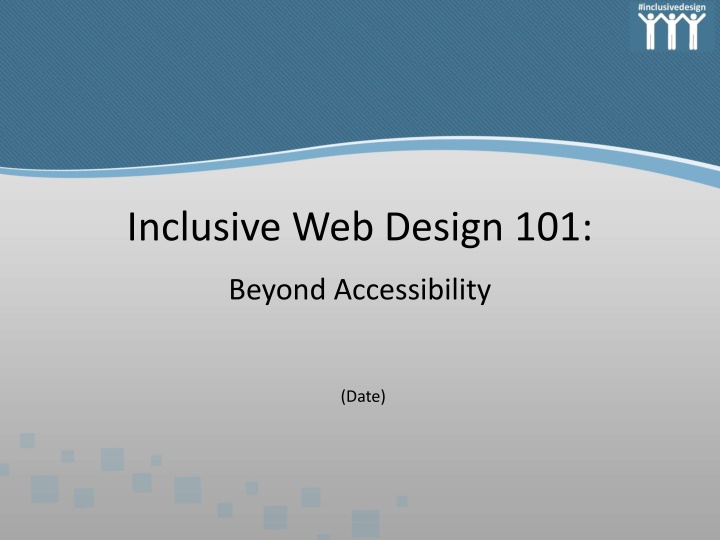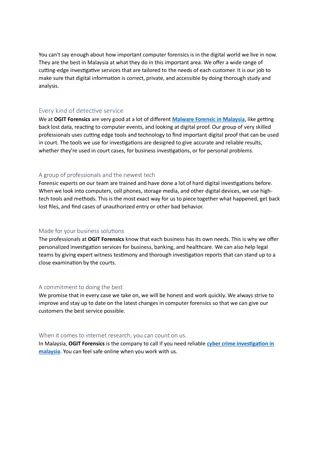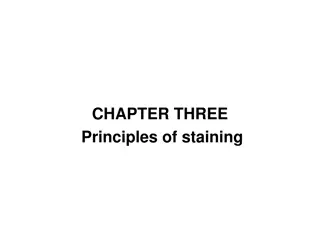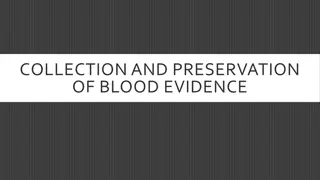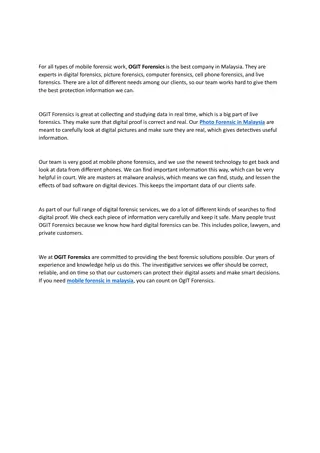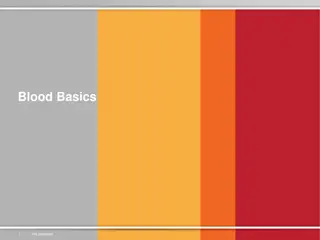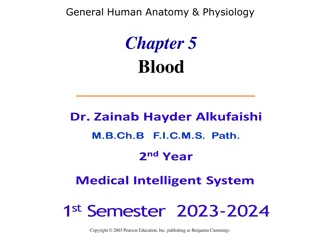Medicolegal Aspects of Blood Stains in Forensic Medicine
Blood and other stains play a crucial role in forensic investigations, helping establish links between a crime, the victim, and the perpetrator. Dr. Shiuli from KGMU discusses the importance of different stains like blood, seminal fluid, vaginal discharge, saliva, and more. Understanding the examination process, determining if a stain is human blood, conducting tests for blood group and sex, and identifying potential causes of death are key aspects covered. The significance of stains in establishing facts, detecting poison, estimating time since death, and discerning between human and non-human blood stains is highlighted.
Download Presentation

Please find below an Image/Link to download the presentation.
The content on the website is provided AS IS for your information and personal use only. It may not be sold, licensed, or shared on other websites without obtaining consent from the author.If you encounter any issues during the download, it is possible that the publisher has removed the file from their server.
You are allowed to download the files provided on this website for personal or commercial use, subject to the condition that they are used lawfully. All files are the property of their respective owners.
The content on the website is provided AS IS for your information and personal use only. It may not be sold, licensed, or shared on other websites without obtaining consent from the author.
E N D
Presentation Transcript
Inclusive Web Design 101: Beyond Accessibility (Date)
Agenda What, Who, and Why of Inclusive Design POUR Concept What Laws Affect Accessibility? What Standards/Guidelines Affect Accessibility? Examples of Website Accessibility Features Perspectives From Those Who Need Accessible Design Web Accessibility Resources/Training Matrix
What Is Inclusive Design Anyway? Inclusive design means: Going beyond the base level of access to information Making something valuable, not just accessible, to as many people as we can.
Accessibility & Inclusive Design Accessibility is an outcome Inclusive Design is a process Derek Featherstone Level Access
Who Is Inclusive Design For? EVERYONE! 57 million Americans (~20%) identify as having some type of DISABILITY
Think About This California and New York 57 million
Who Is Inclusive Design For-2? Disability types: Visual Hearing Motor Cognitive But what about? Temporary Disabilities (broken bone, carpal tunnel, seizures, sleep deprivation .) Aging, English as a second language population Many more
Why Should I Care About Inclusive Design? 1. Right Thing to Do Difficult to imagine life without access to all the web has to offer For many, a limited and frustrating web experience is their reality Accessible web provides equal opportunity
We are ALL just temporarily able-bodied
Guiding Principles POUR Concept Perceivable Operable Understandable Robust
Perceivable Input into the brain via senses Think: touch, hearing, sight . Examples Alt-text for all images Form elements labeled Tables are for data Color contrast No pictures of text Closed-captions for video
Operable Not everyone uses a standard keyboard and mouse Navigate content by multiple methods search features, site indexes and site maps Use proper page headings, bulleted lists, etc. User-controlled time limits Video or moving content should allow for pausing, rewinding or fast-forwarding
Understandable Language should be as easy to understand as possible Navigation consistent and predictable Form controls clearly labeled
Robust Web content should not require specific technologies or version Strike a balance between pushing innovation and considering the technologies used by your audience
Why Should I Care About Inclusive Design-2? 2. Smart Thing to Do Opens your site to a wider audience (potential 20%+ or 57 million increase in users) Good for search engine optimization (SEO), search bots, Google ranking, etc.
Why Should I Care About Inclusive Design-3? 3. Lawful Thing to Do Government-funded programs/schools, airlines, non-profits and even private companies are required Reduce Legal Liability - even if you aren t legally obligated (like government is), you can be subject to an ADA complaint.
What Laws Affect Accessibility? Section 504 Section 508 Section 255 Telecommunications ADA Title II (state and local government) ADA Title III (public accommodations) IDEA K-12 Education And private companies hope they won t get sued, but it has happened Winn-Dixie, Hobby Lobby, Five Guys, etc. (2017)
What Standards/Guidelines Affect Accessibility? Section 508 Web Content Accessibility Guidelines (International Standard)
Section 508 Refresh Major Changes Restructuring provisions by functionality (vision, hearing, cognition, motor, etc.) instead of product type Incorporating Web Content Accessibility Guidelines (WCAG) 2.0 by reference (Level A and Level AA) to websites, as well as to non-web electronic documents and software What types of non-public facing electronic content that must comply
Think about this Back in 2009, the Mobile First approach appeared, where we design for smaller screens first (smart phones and tablets) then add more features and content for larger screens. Now Accessibility First Build as much of it in to design as possible Educate content editors
Examples of Website Accessibility Features W3C Web Accessibility Easy Checks Image alternative text (pictures, illustrations, charts, etc.) Defining headings throughout your content Proper Color Contrast Keyboard Access Multimedia Alternatives
Plain Language (Readability) The more complex the material, the shorter the sentences should be Sentences should average around 20 words Vary with 35-word and some 3-word sentences. Keep 3- and 4-syllable words to a minimum
Plain Language The more complex the material, the shorter the sentences should be Sentences should average around 20 words Vary with 35-word and some 3-word sentences. Keep 3- and 4-syllable words to a minimum
Perspectives From Those Who Need Accessible Design User Perspectives Video Accessible Design Matters
Web Accessibility Resources Missouri ICT Accessibility website (launched January 2018)
Web Accessibility Training Recommended Role-Based Approach Web Content Editors (including documents editors) Web & Application Testers Web & Application Developers Multimedia Developers And more
Q & A (Insert contact info here) https://at.mo.gov/it-access Note: Some presentation material adapted from presentations by Carie Fisher
